Victorian front gardens are celebrated for their blend of formality, intricate detailing, and lush plantings that create a refined yet welcoming entrance. Common elements include wrought iron railings, geometric box-hedge parterres, and mosaic-tiled paths, all reflecting the era’s fascination with craftsmanship and structure. Planting schemes often mix formal hedges with exuberant flowering shrubs—roses, holly, hydrangeas—and seasonal bulbs for year-round interest. Architectural features like urns, gas-light lanterns, and ornamental seating enhance the sense of elegance, while creative additions such as stumperies and topiary bring a touch of whimsy. Below are 20 detailed ideas to inspire a Victorian-inspired front garden.
1. Ornate Wrought Iron Railings and Gates
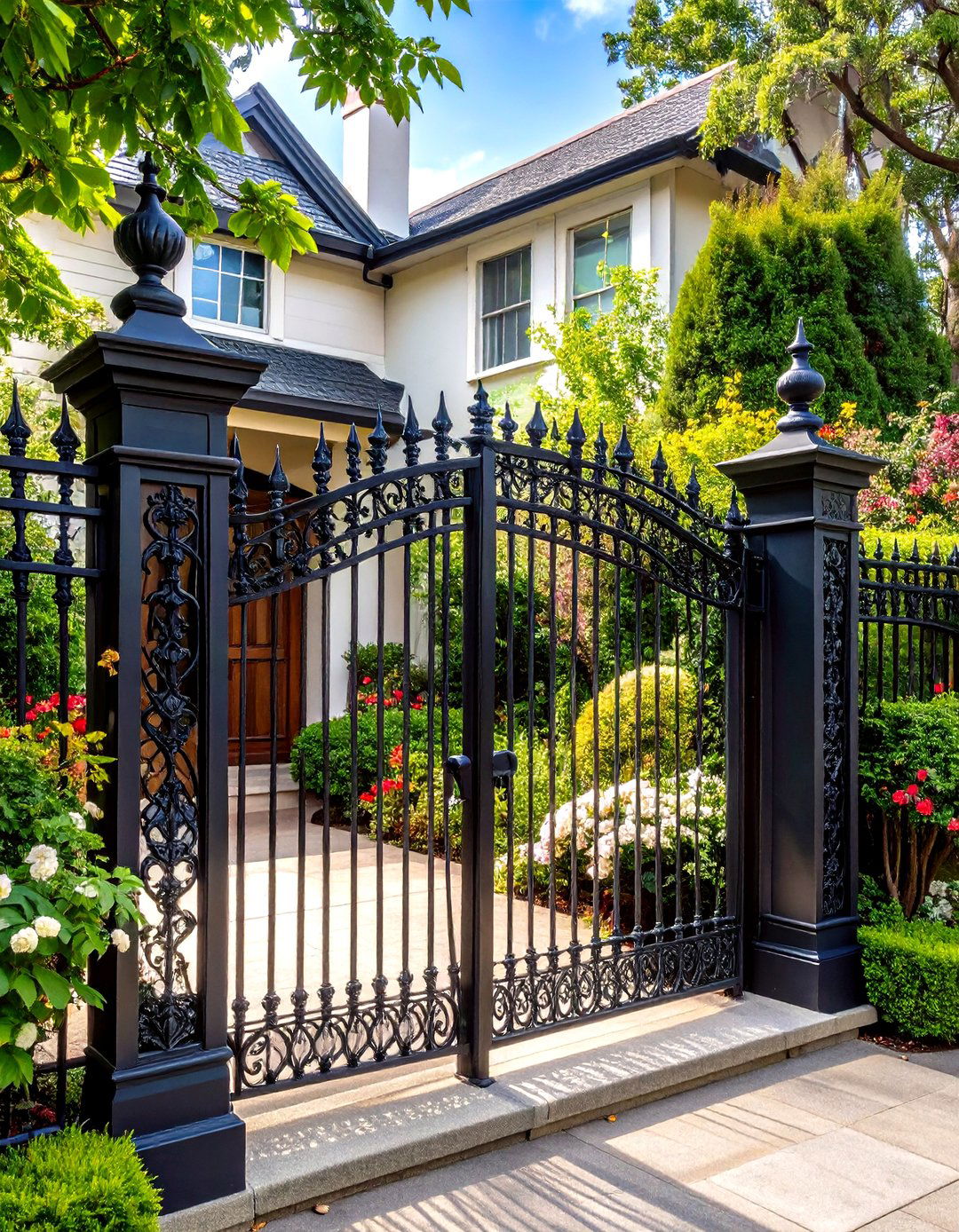
Many Victorian front gardens were defined by ornate wrought iron railings and gates, serving both functional and decorative purposes. Designed with elaborate scrollwork and finials, these railings framed geometric garden layouts and complemented brick or rendered walls. Matching iron gates often featured pointed arches or crest motifs that added grandeur to the entrance. Strong yet elegant, wrought iron details also provided security without obstructing views of the lush plantings within.
2. Black and White Victorian Mosaic Tile Paths
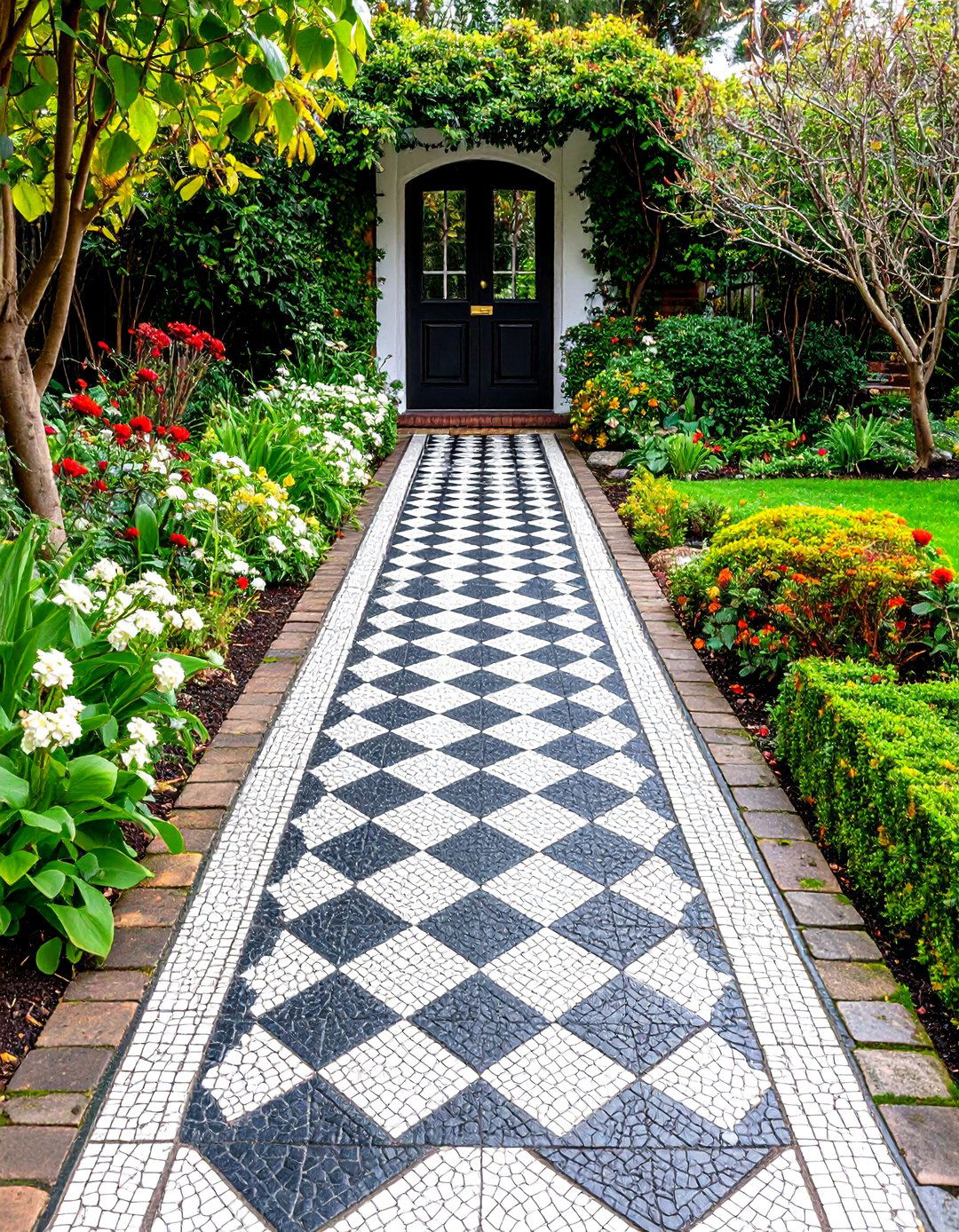
Black and white encaustic tiles arranged in intricate geometric patterns were a hallmark of Victorian pathways. Typically crafted from clay, these tiles formed checkerboard motifs or stylized Victorian roses, leading from gate to doorstep with visual drama. The contrasting monochrome palette harmonized with brick façades and ironwork, while durable fired glazes ensured longevity in high-traffic areas. Restoring or laying new tile paths can instantly evoke the period’s characteristic elegance and attention to detail.
3. Geometric Box Hedge Parterres
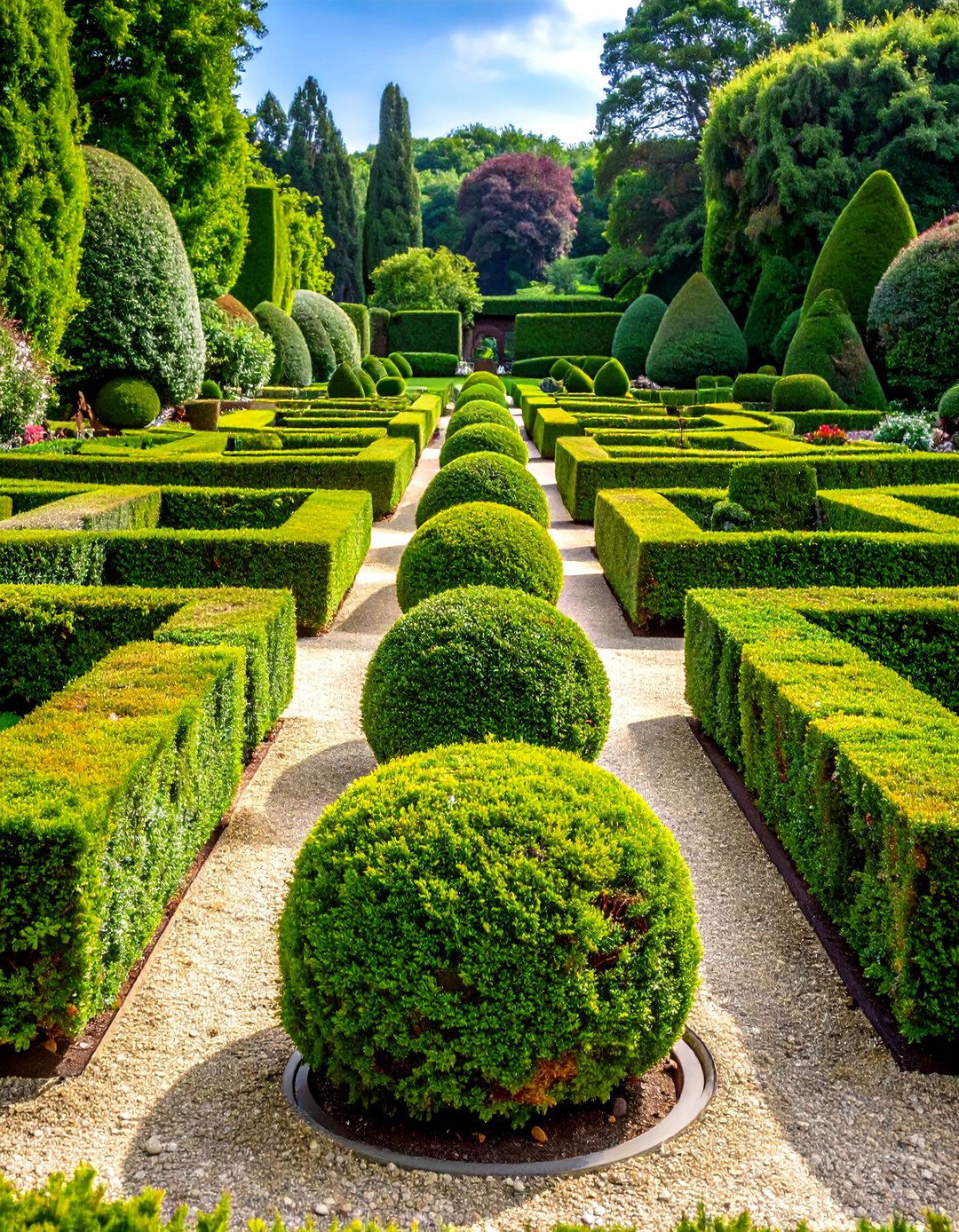
Formal parterres defined by low box hedges (Buxus sempervirens) were central to Victorian garden design, creating symmetrical patterns and compartments. Meticulously clipped into squares, circles, or scroll motifs, these hedges framed beds of annuals and perennials, offering year-round structure. The evergreen nature of box meant the parterre retained its shape even in winter, revealing the underlying gravel or turf paths. Regular pruning and soil care keep the hedges healthy and precise.
4. Stumperies with Ferns and Mosses
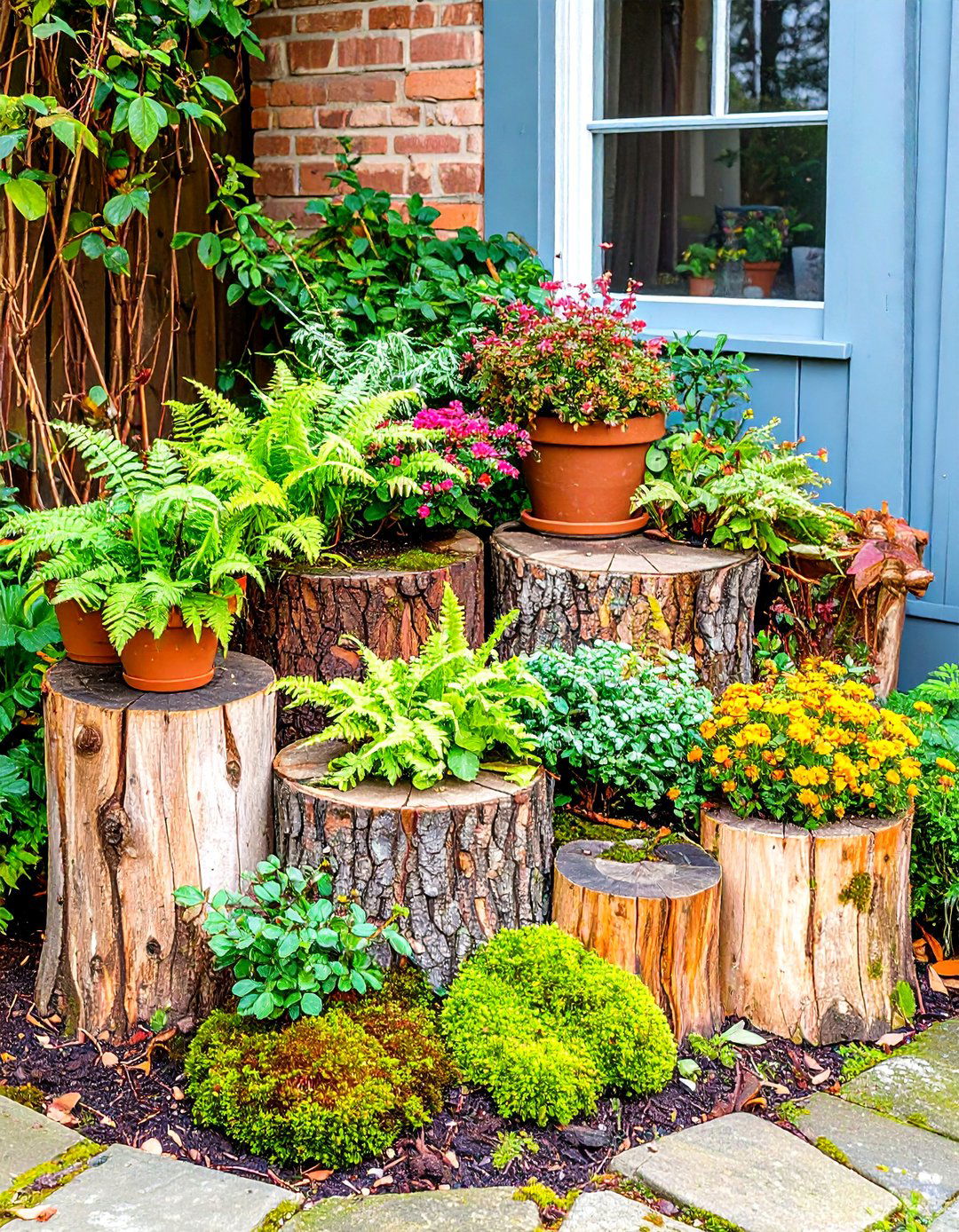
Stumperies—rockery-like arrangements of tree stumps and logs—became popular Victorian features, showcasing fern and moss plantings. Originating at Biddulph Grange in 1856, these structures created shaded microhabitats for woodland species like polypody and maidenhair ferns. By reusing storm-felled wood, stumperies blended conservation with artistry, offering a tactile contrast to formal hedges. Placed against walls or beneath trees, they add rustic charm and biodiversity to the front garden.
5. Topiary Sculptures

The art of topiary—clipping shrubs into geometric or animal shapes—was a living sculpture movement in Victorian gardens. Common subjects included balls, spirals, and tiers made from European box, yew, or holly. While box faced challenges from caterpillars and blight, alternatives like Japanese holly (Ilex crenata) and yew offer resilience. Positioned as focal points along axes or at path intersections, topiary forms provide height and whimsy.
6. Period-Appropriate Specimen Plants
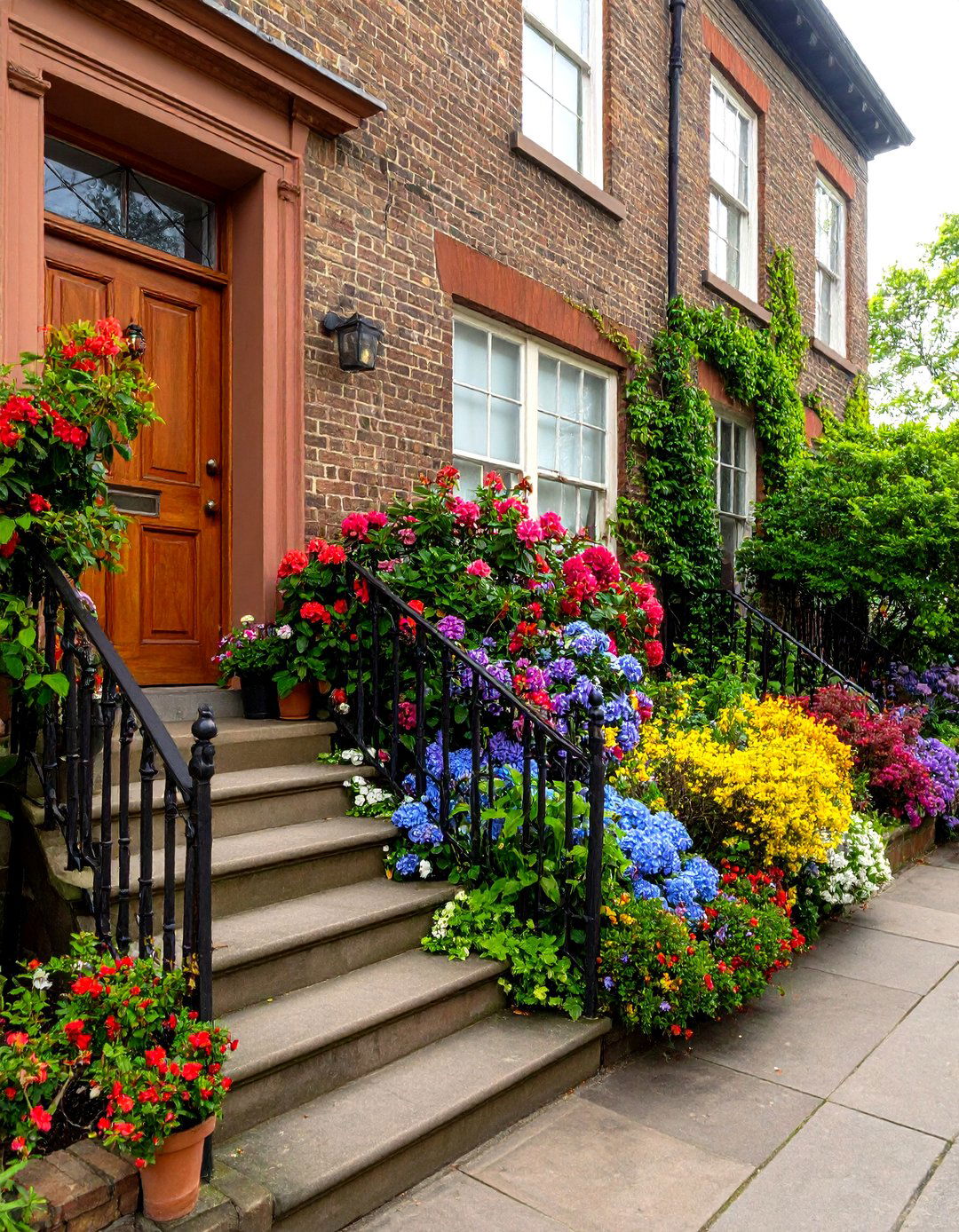
Victorians prized exotic and architectural plants—hydrangeas, rhododendrons, and hearty shrubs like forsythia and lilac. Azaleas and peonies offered bold flower heads, while Andromeda and barberry added evergreen structure. Placement near borders or as standalone specimens showcased dramatic foliage and blooms. Specimen plantings balanced formal hedges with a sense of botanical discovery.
7. Climbing Roses and Wisteria Arbors
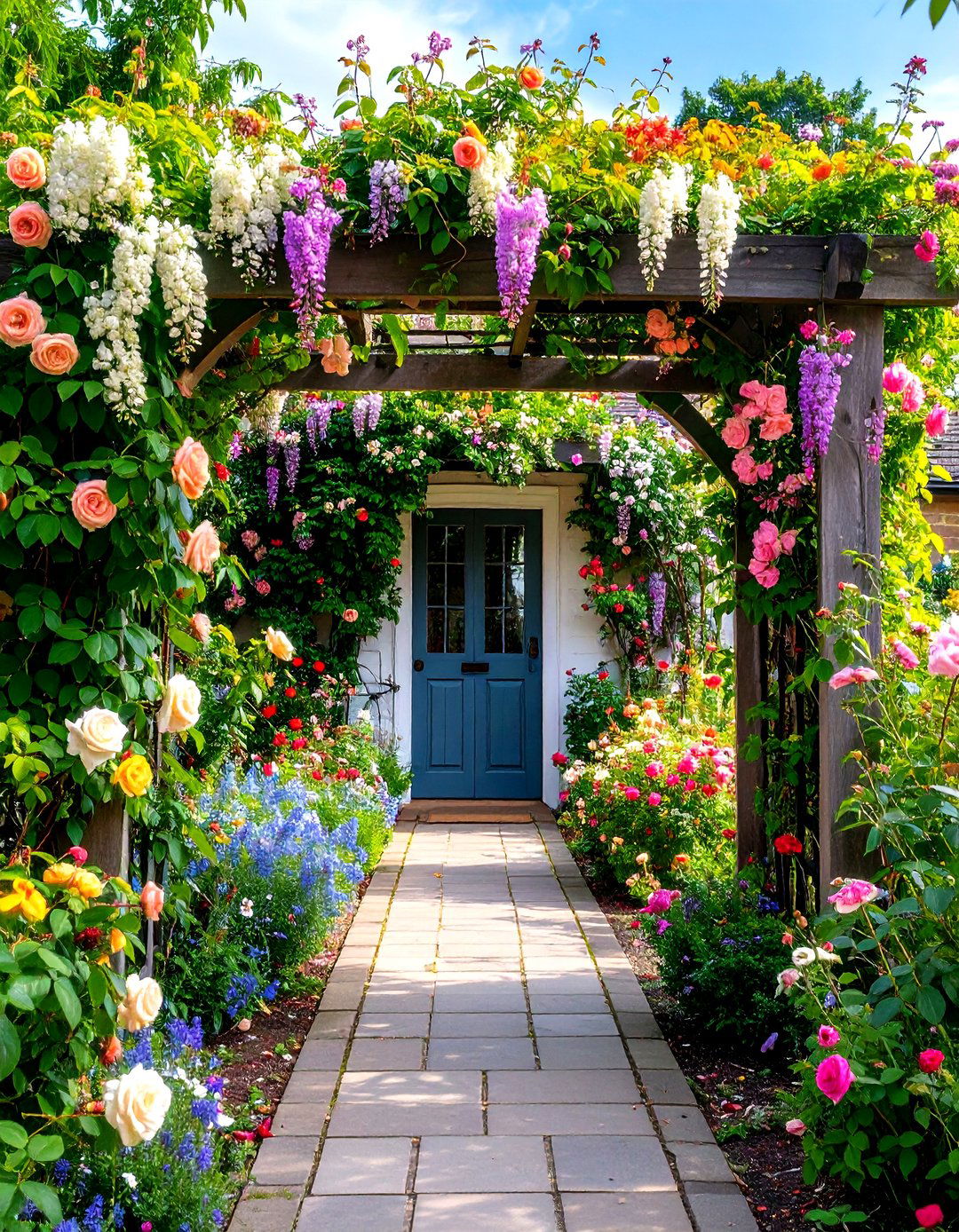
Climbing roses, honeysuckle, and wisteria draped over railings, gates, and pergolas impart romantic vintage appeal. Wilted over archways, these vines softened hardscapes and infused the air with fragrance during late spring and summer. Rambling roses and clematis varieties were trained on iron supports, creating vertical interest and seasonal color. Proper pruning encouraged healthy growth and profuse flowering.
8. Victorian-Style Gas Lamp Lighting
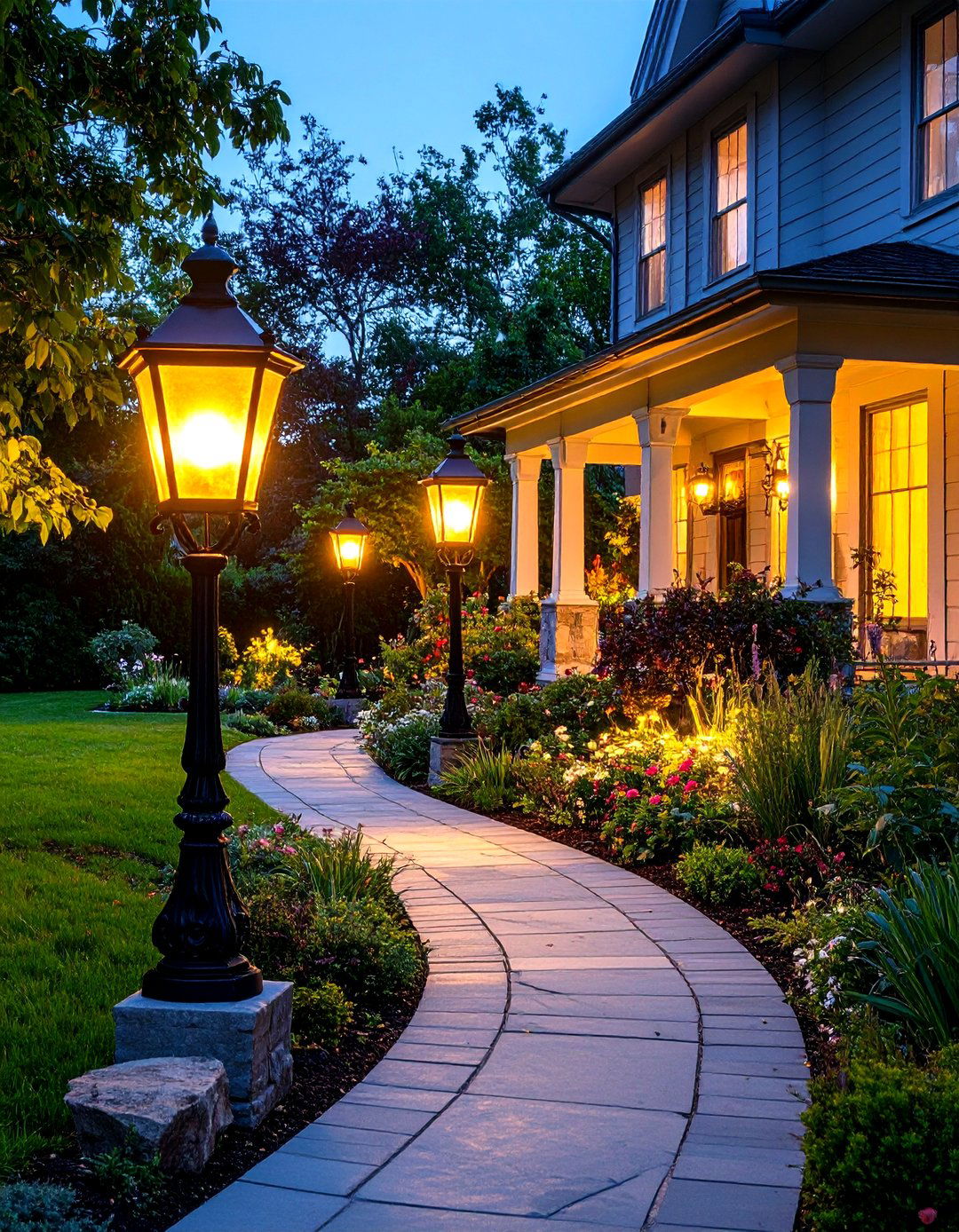
Signature gas-lamp lanterns or modern replicas added period-appropriate illumination to front gardens. Mounted on piers or walls, they cast warm, flickering light, enhancing evening ambiance and security. Solar-powered LED variants mimic the soft glow without wiring, blending heritage aesthetics with sustainability. Strategic placement along paths or near entryways guides visitors after dusk.
9. Seasonal Bulb Displays
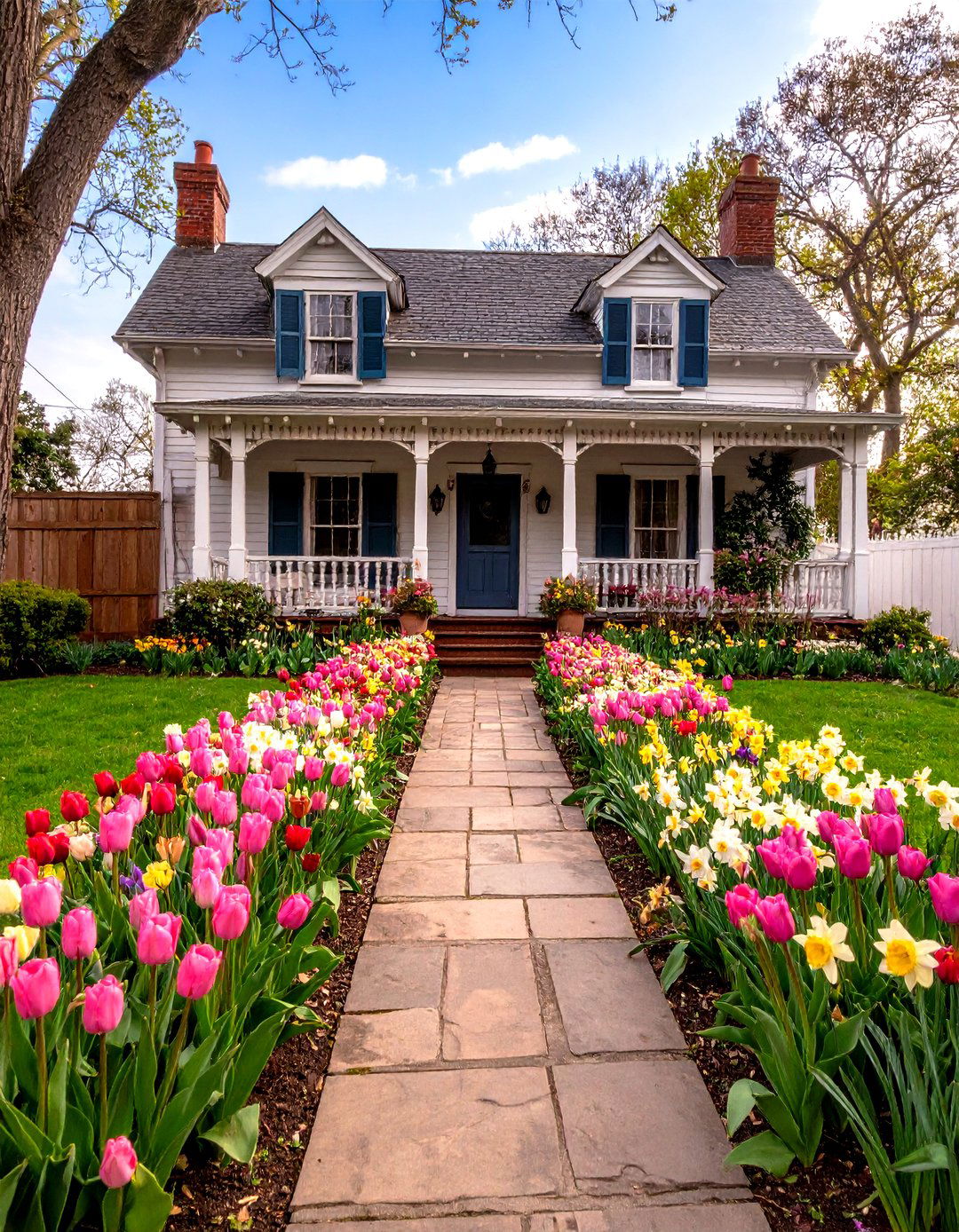
Victorians embraced bulbs—tulips, daffodils, crocuses—to create early spring color in front beds. Planted en masse within parterre compartments or borders, they offered bursts of vibrant hues against evergreens. Layering bulb varieties ensured continuous bloom from late winter to early summer. Naturalizing bulbs under hedges added informal charm to the structured layout.
10. Granite and York Stone Paving
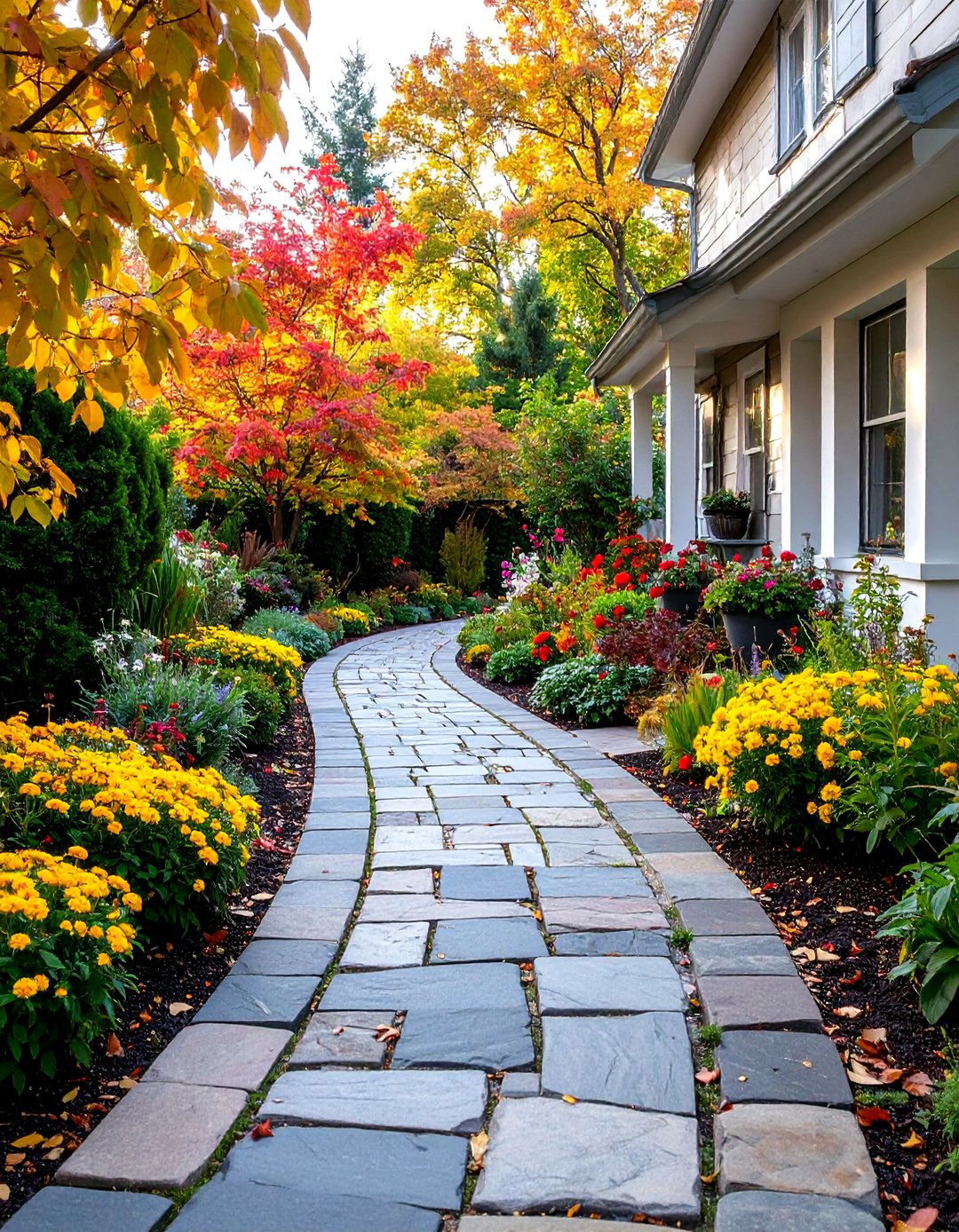
Durable natural stones—granite setts and York stone slabs—were prized for Victorian pathways and patios. Their worn textures and warm tones complemented red brick façades and black-and-white tiles. Flagstones laid in simple ashlar or herringbone patterns provided elegant, non-slip surfaces. Stone edging defined lawn boundaries and maintained neat planting borders.
11. Ornamental Urns and Planters
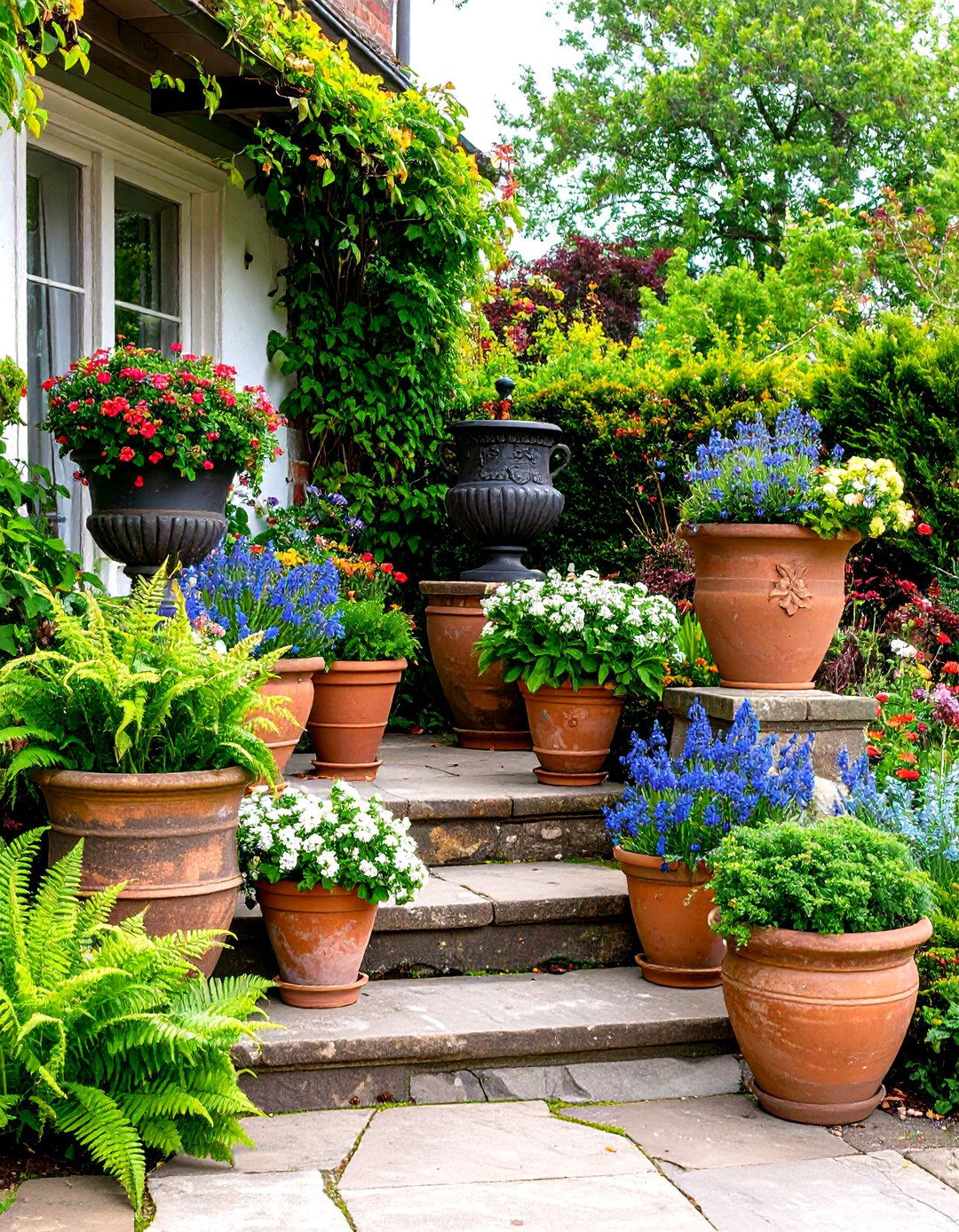
Terracotta and cast-iron urns held seasonal bedding, ferns, or small conifers, acting as architectural accents. Positioned on plinths or gate piers, they punctuated axial lines and added vertical emphasis. Switching plantings per season—from summer pelargoniums to winter-evergreen ferns—kept urns interesting year-round.
12. Windowsill Boxes and Balustrade Boxes
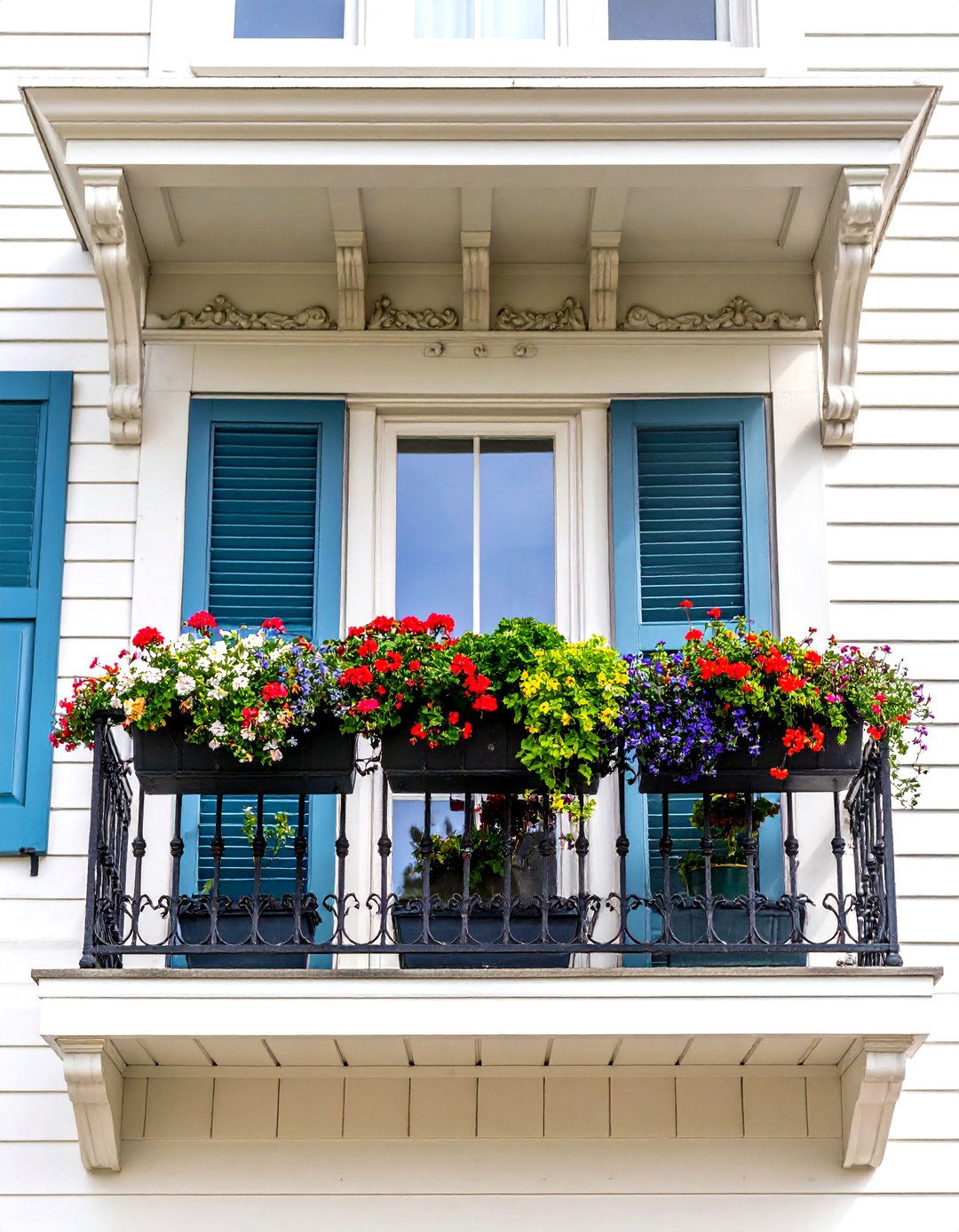
Stamped metal or timber window boxes provided compact planting opportunities for geraniums, lobelia, and ivy. Balustrade boxes attached to porch railings echoed symmetrical border plantings, tying façade and garden together. Bright floral cascades softened brick surrounds and added curb appeal.
13. Gravel Drives with Grass Inlays
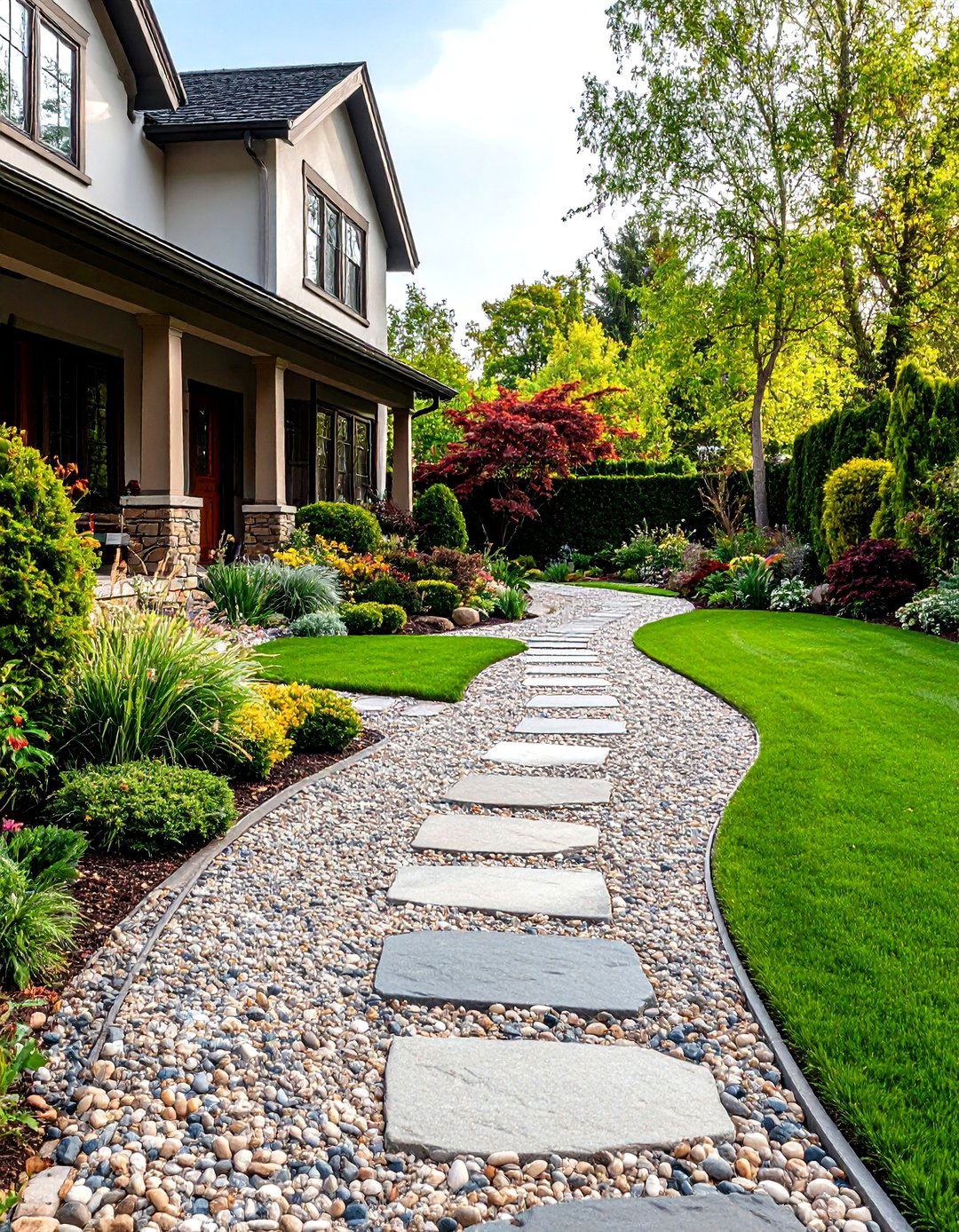
Gravel drives edged with stone and punctuated by grass strips offered permeable Victorian-style parking areas. This informal surface contrasted formal beds, while grass inlays reduced dust and added greenery. Mixed-size pebbles in muted hues suited period aesthetics.
14. Herbaceous Borders
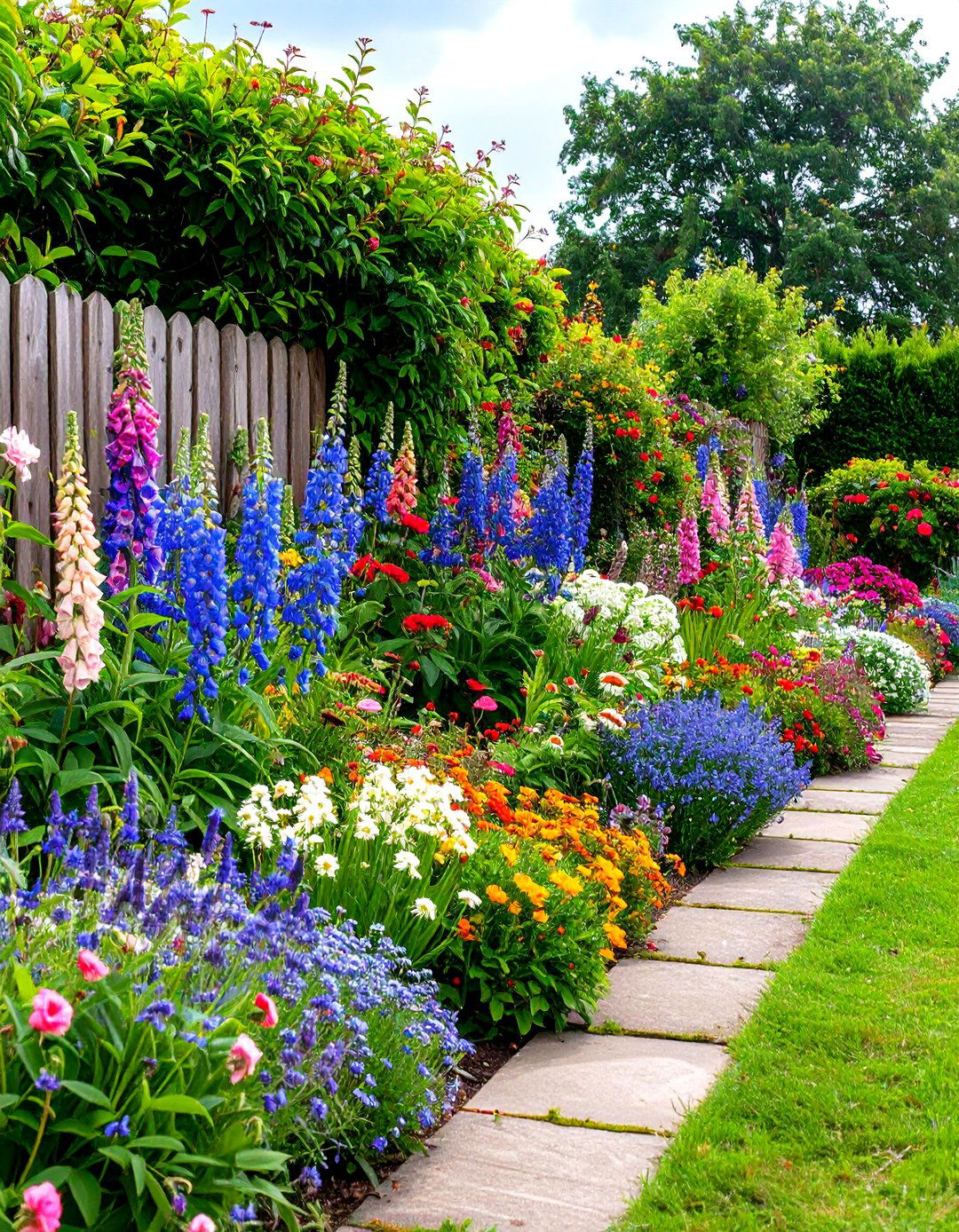
Long borders of perennials—delphiniums, roses, foxgloves—created living tapestries along walls or fences. Planting in drifts and layers ensured continuous bloom and textural variety. Tall backdrops of holly or laurel enclosed the garden, supporting softer flowering stems in front.
15. Decorative Cast-Iron Seating

Ornate cast-iron benches and bistro sets provided intimate seating areas for admiring the garden. Painted in period colors—black, deep green, or ivory—they blended with wrought ironwork and masonry. Weatherproof cushions added comfort and color accents.
16. Ivy-Covered Walls and Pergolas

Evergreen or variegated ivy trained over walls and pergolas created living backdrops and privacy screens. Climbing hydrangea (petiolaris) and star jasmine added seasonal blooms to entwined greenery. Careful maintenance prevented damage to masonry while maintaining luxuriant coverage.
17. Victorian Color Palette Planting
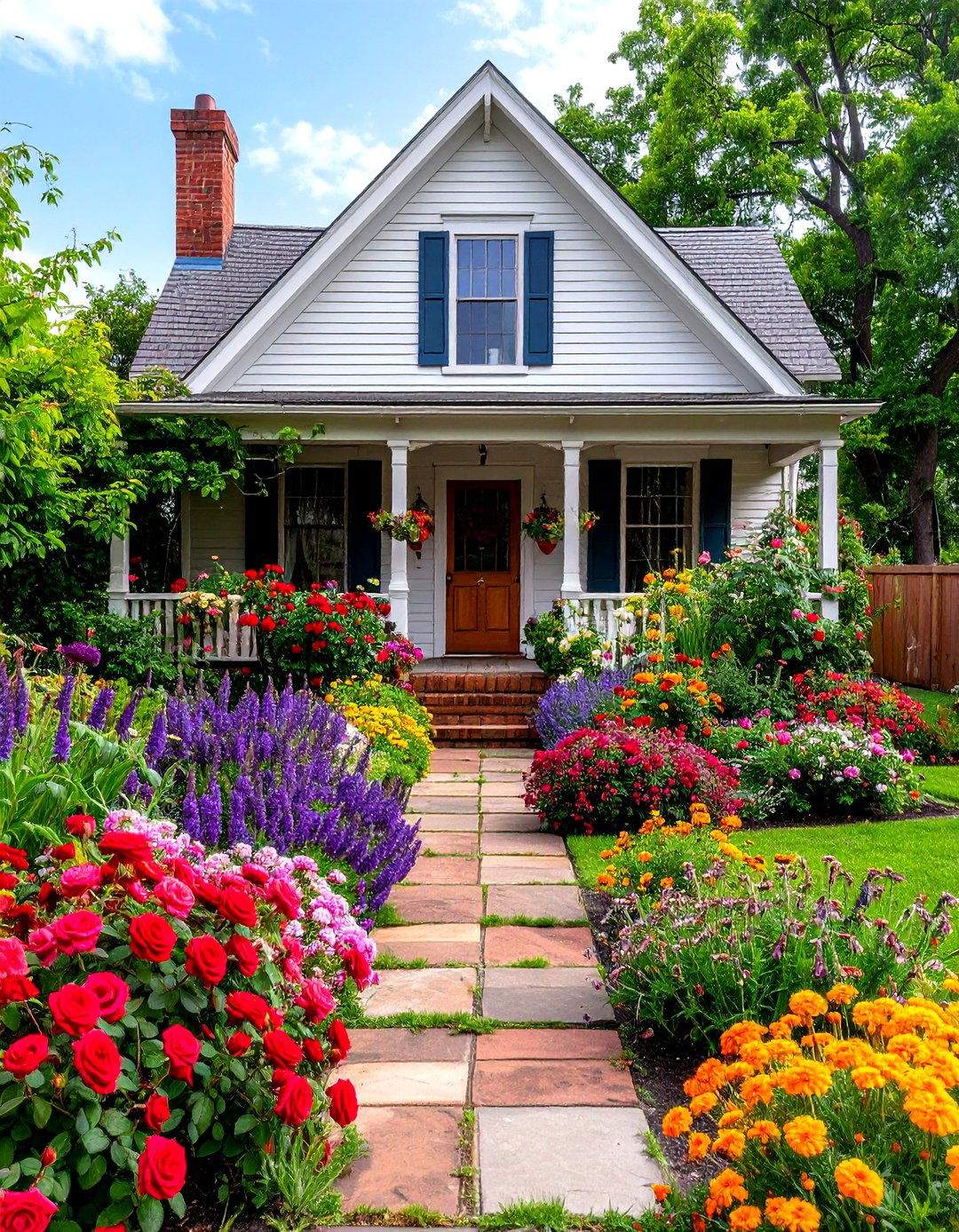
Classic Victorian palettes combined jewel tones—deep reds, purples, golds—with crisp whites and greens. Roses ‘Crimson Glory’, purple salvia, and golden marigolds created bold contrasts. White alyssum and dusty miller provided foil for richer hues.
18. Focal Point Water Features
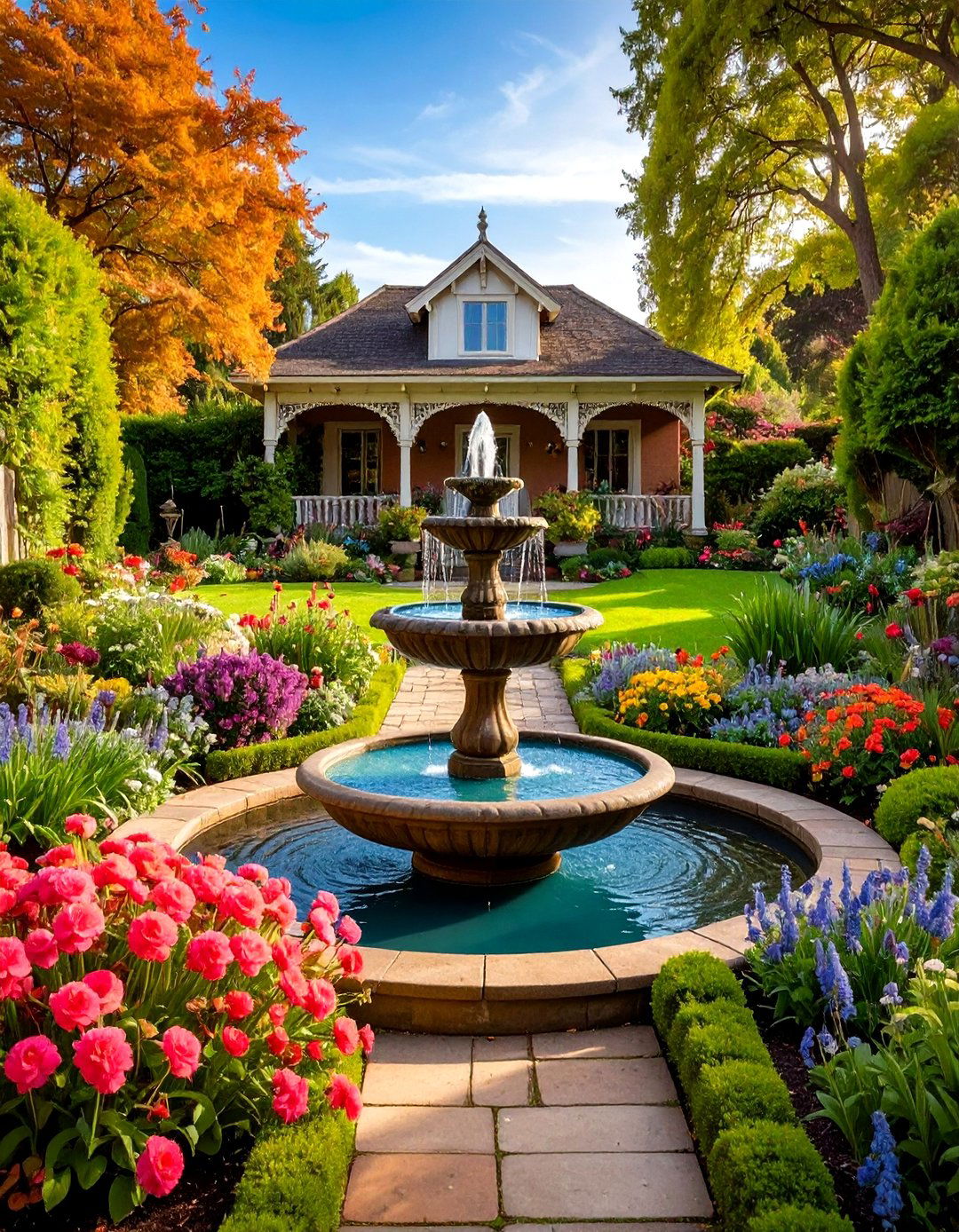
Small cast-iron fountains or ceramic birdbaths served as Victorian focal points amid parterres. Gently trickling water added sound and wildlife appeal. Placement at axis intersects reinforced formal symmetry.
19. Native and Exotic Botanical Collections
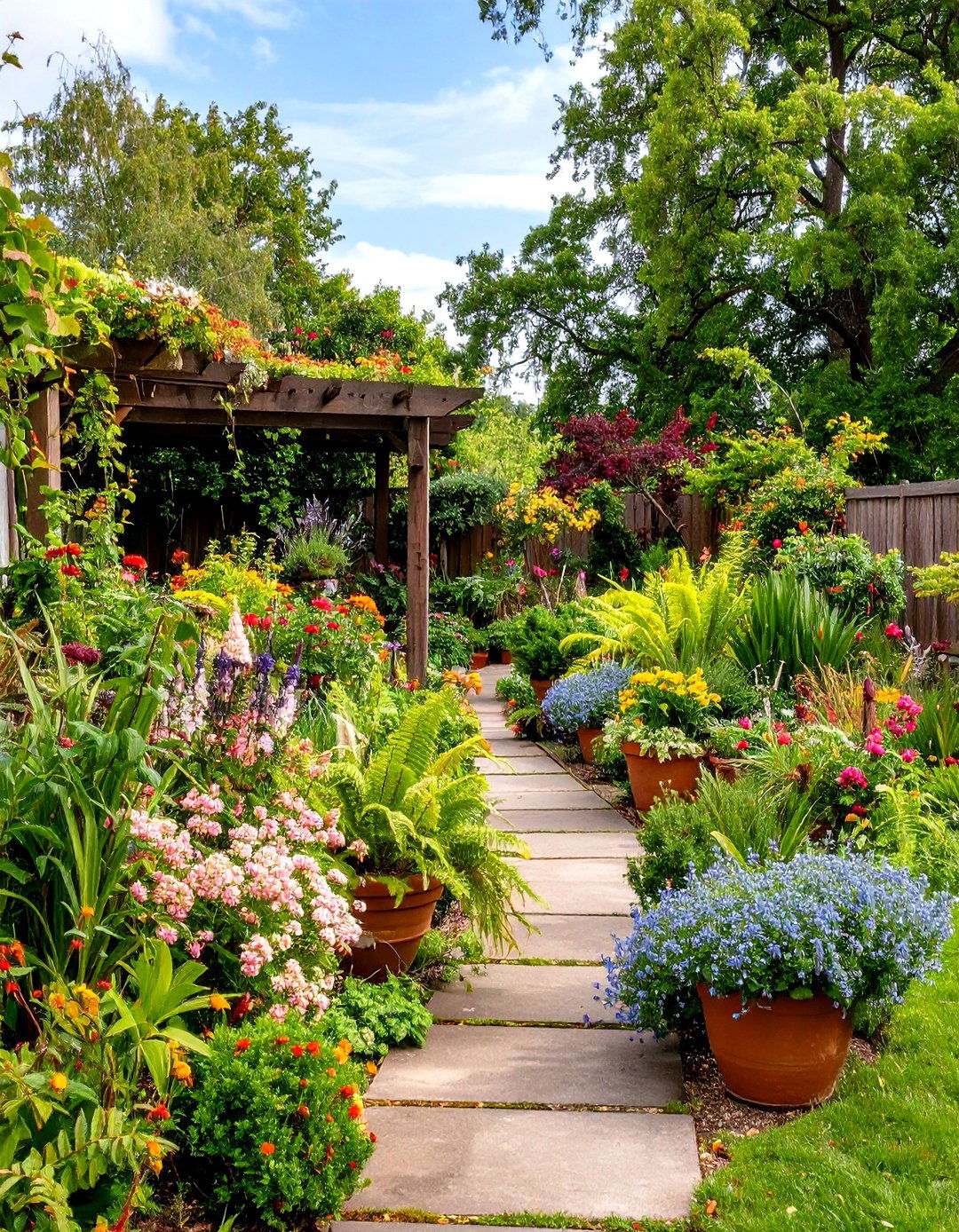
Victorian collectors prized exotic specimens—ferns, palms, and orchids—alongside native holly and hawthorn. Containerized tender plants could be moved indoors for winter, expanding the range of possibilities. Botanical variety reflected the era’s fascination with plant exploration.
20. Symmetrical Layout with Central Axis
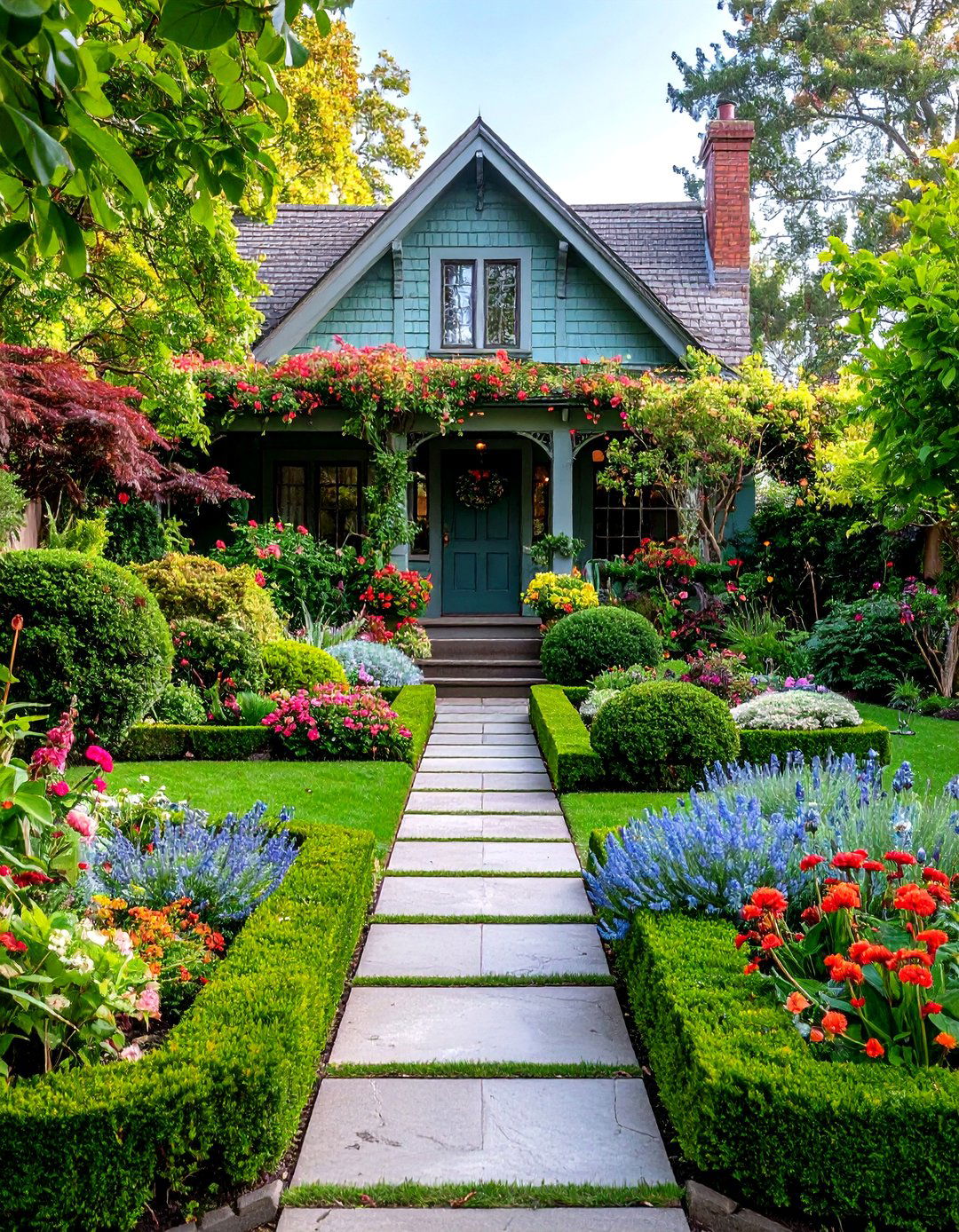
A balanced layout with a central path leading to the door, flanked by mirrored beds or hedges, epitomized Victorian formality. This axial design guided the eye and organized plantings into harmonious compartments. Rotational elements—round tubs or circular beds—often marked the path’s midpoint.
Conclusion:
Victorian front gardens combine disciplined geometry with rich botanical displays, marrying formality and abundant planting. Key ingredients—wrought ironwork, box-hedge parterres, mosaic tile paths, and specimen plantings—create a refined framework, while elements like stumperies, topiary, and seasonal bedding inject personality. By blending architectural details with diverse plant textures and colors, a Victorian-inspired front garden delivers enduring curb appeal and historical charm.


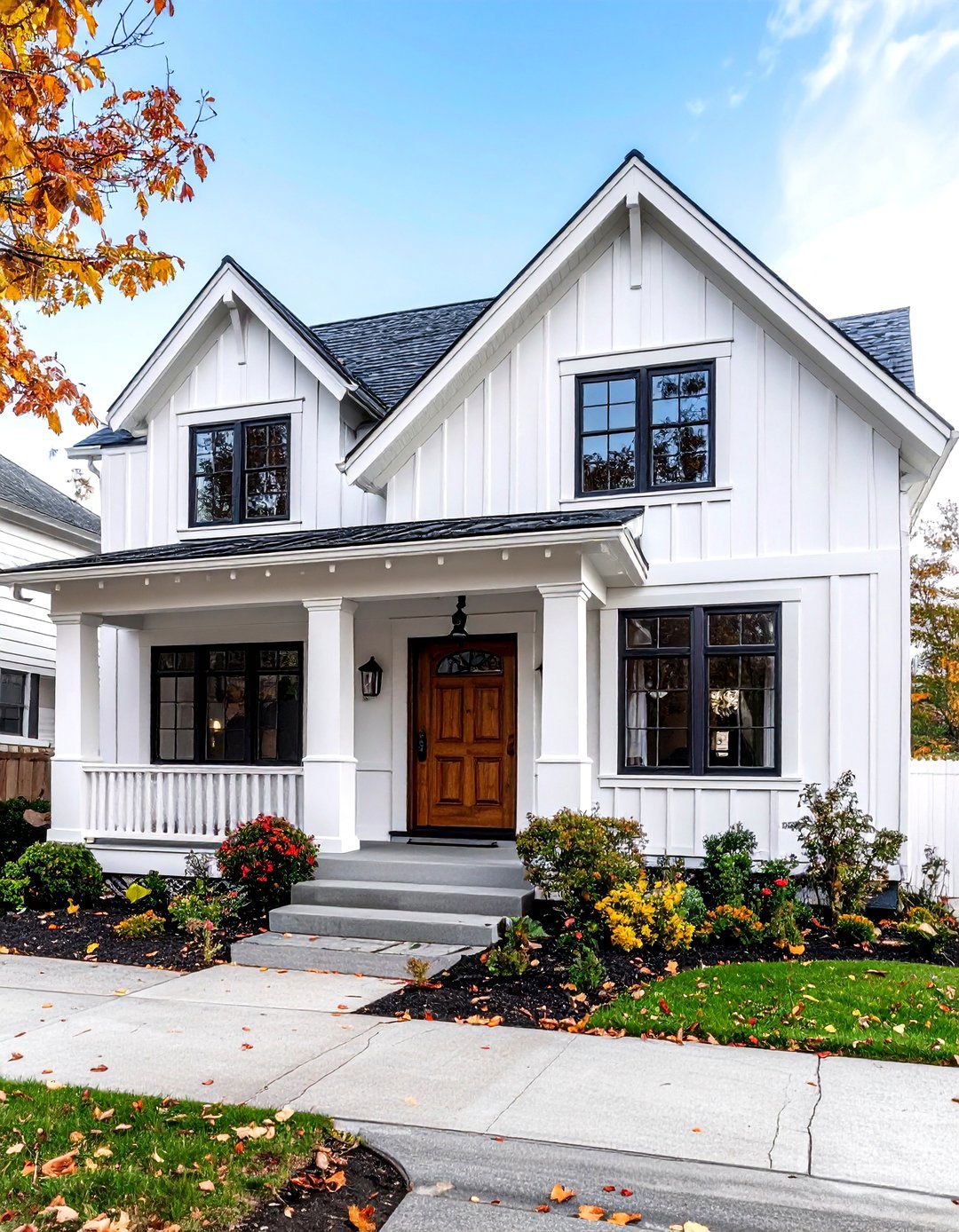
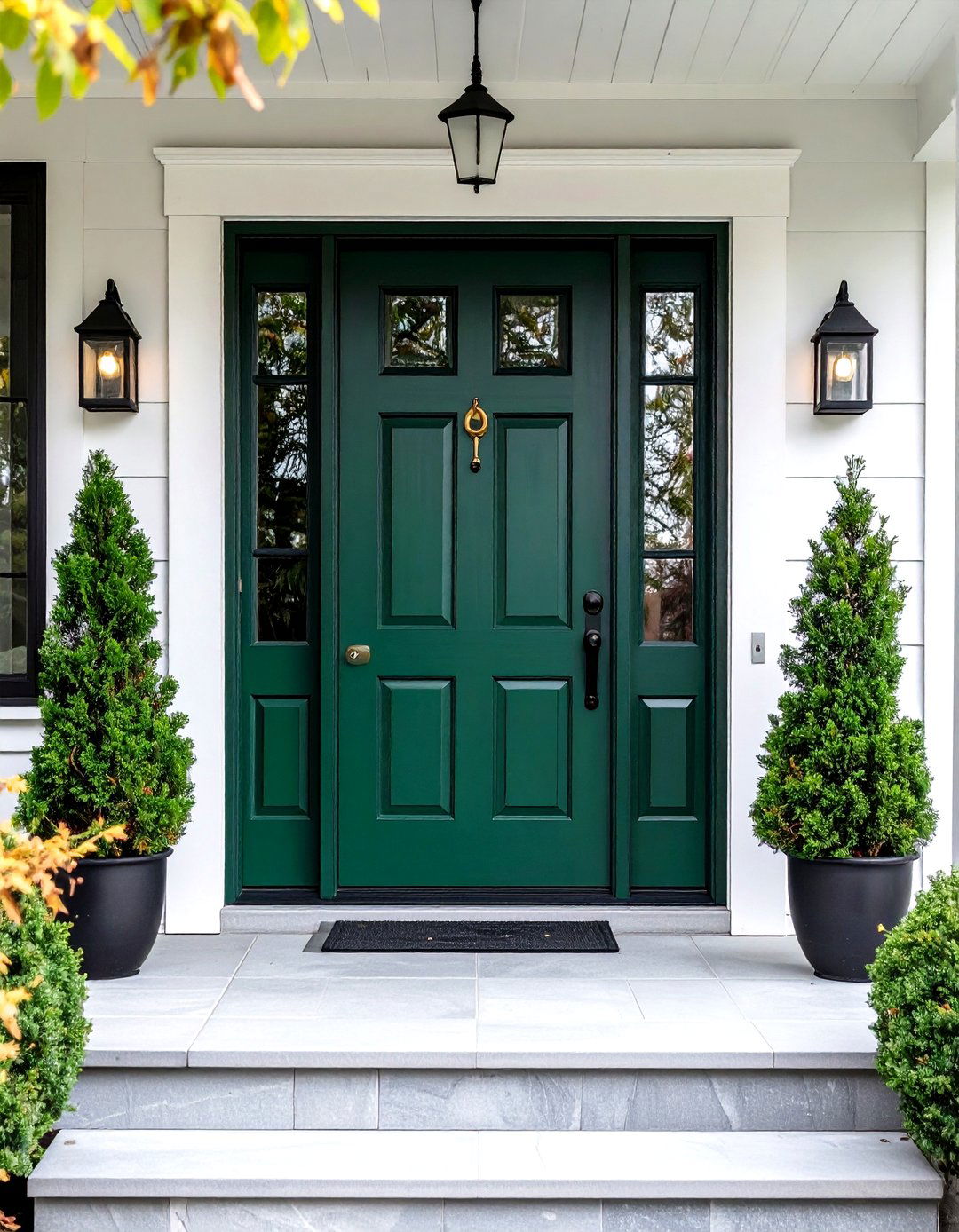
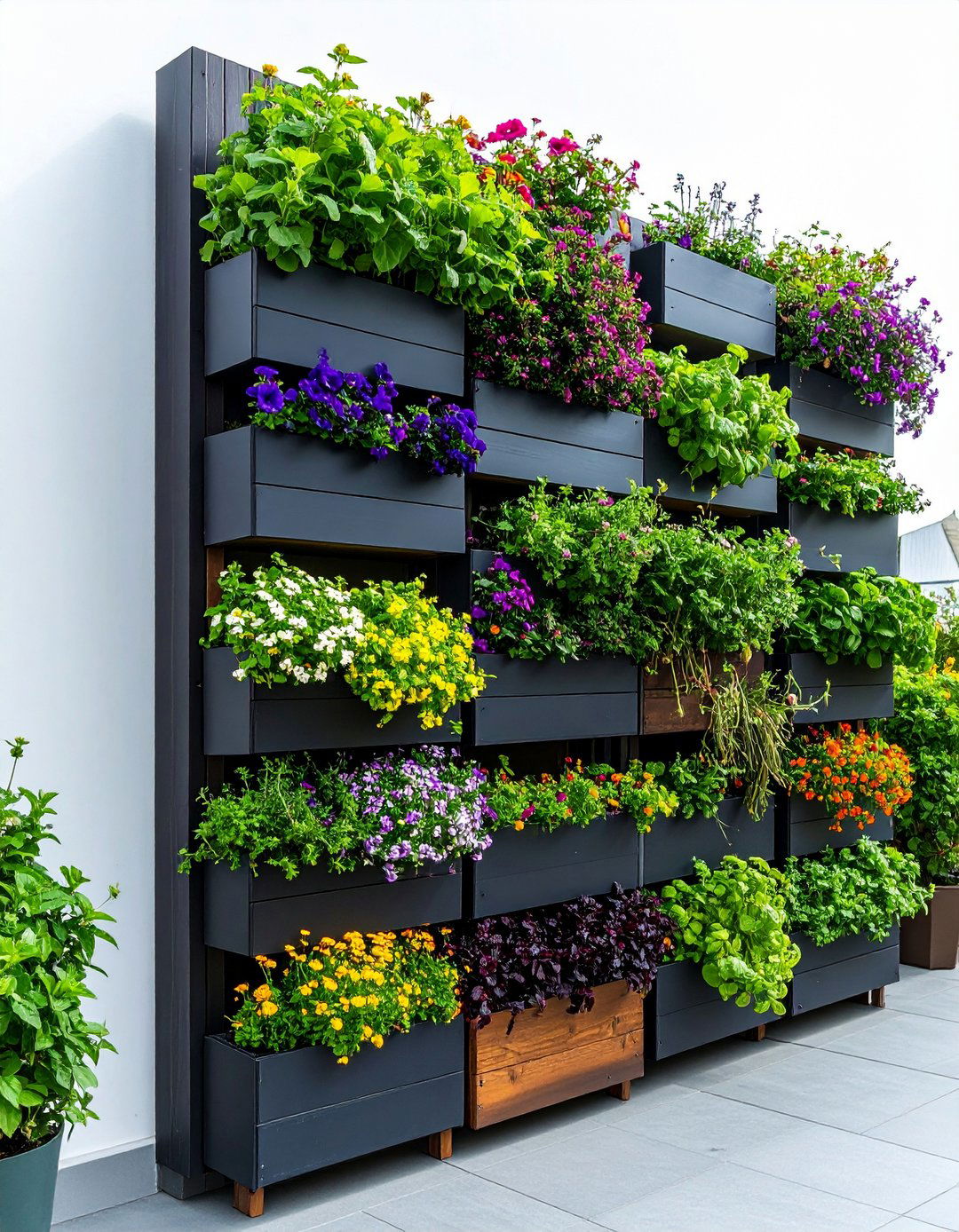
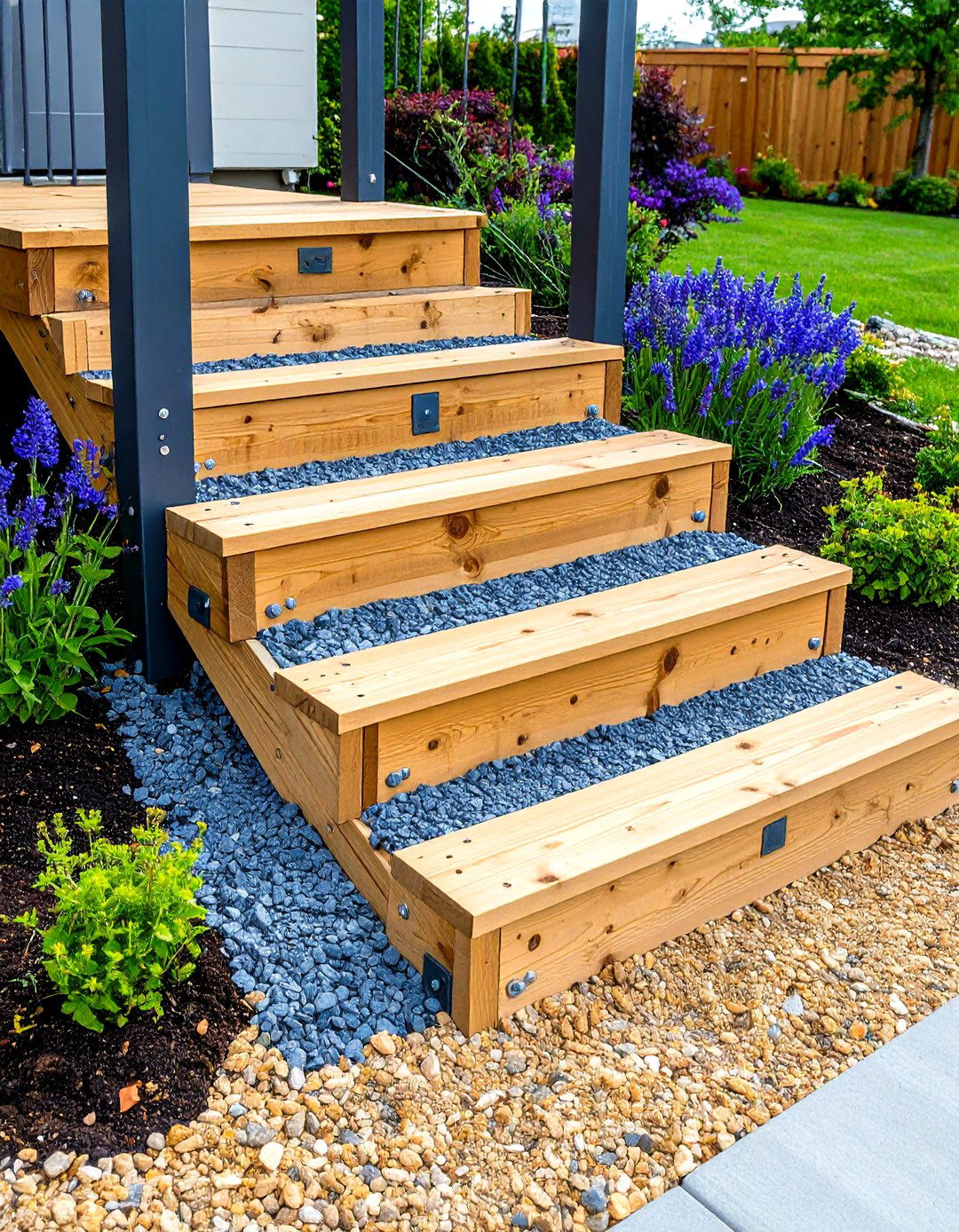


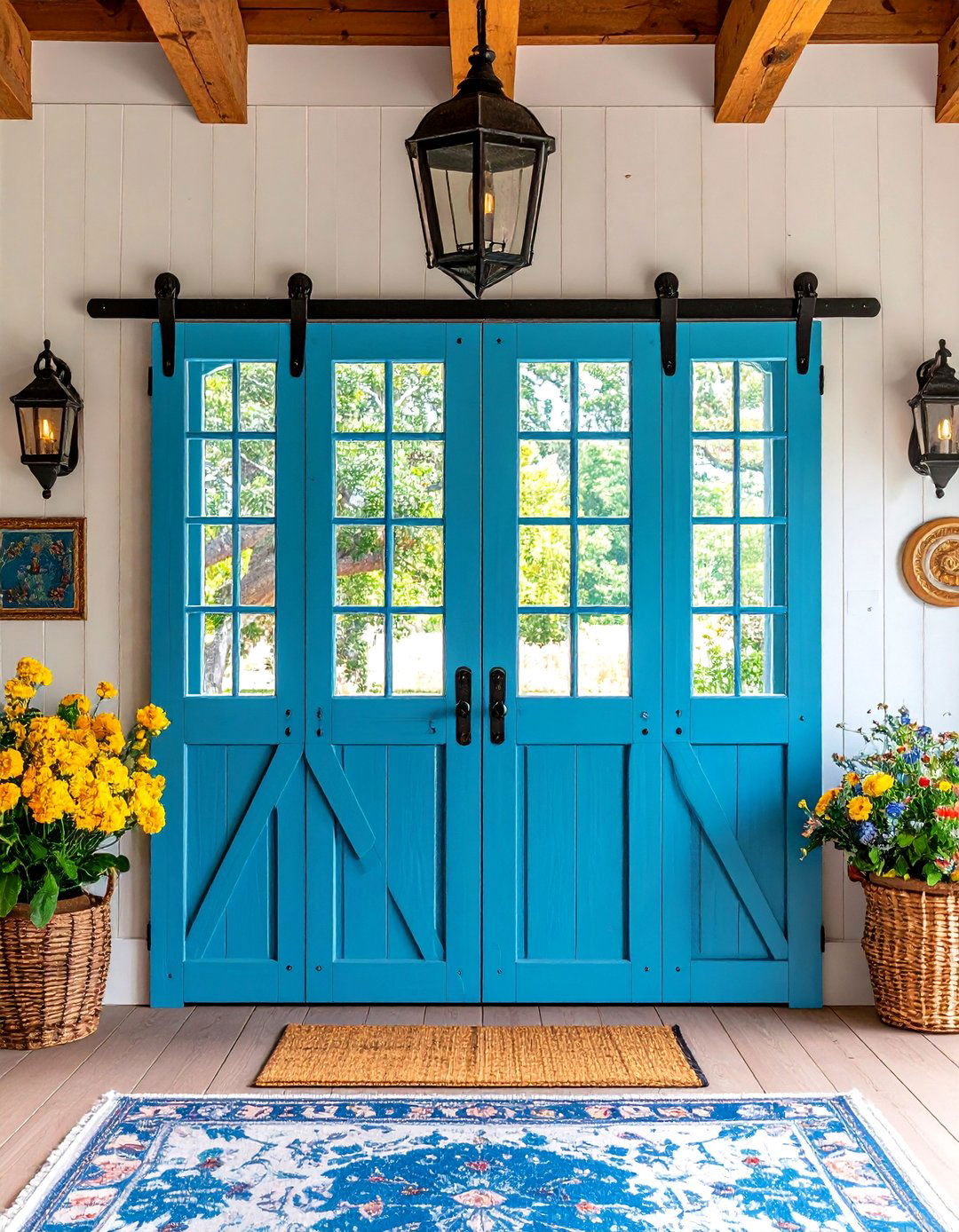
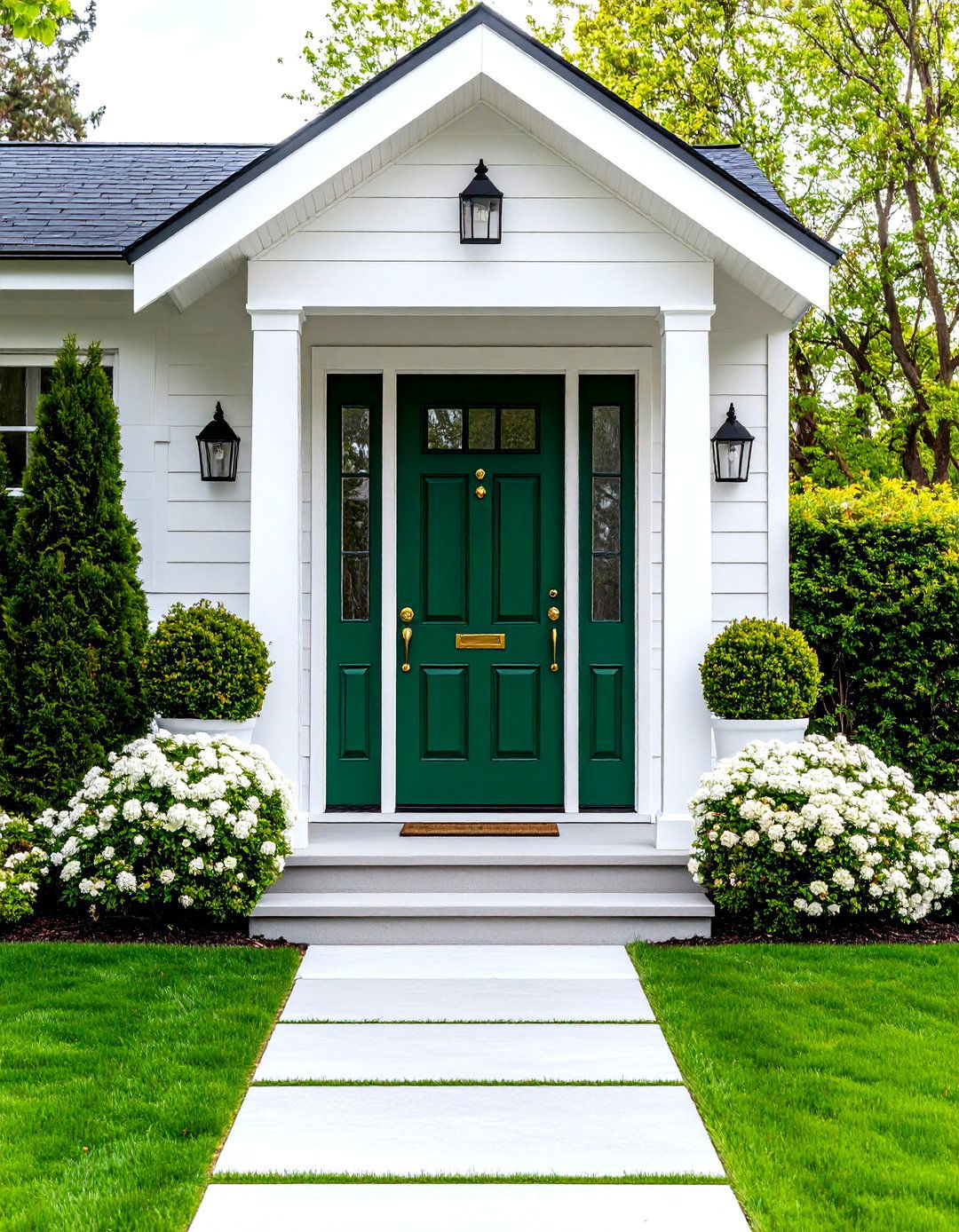

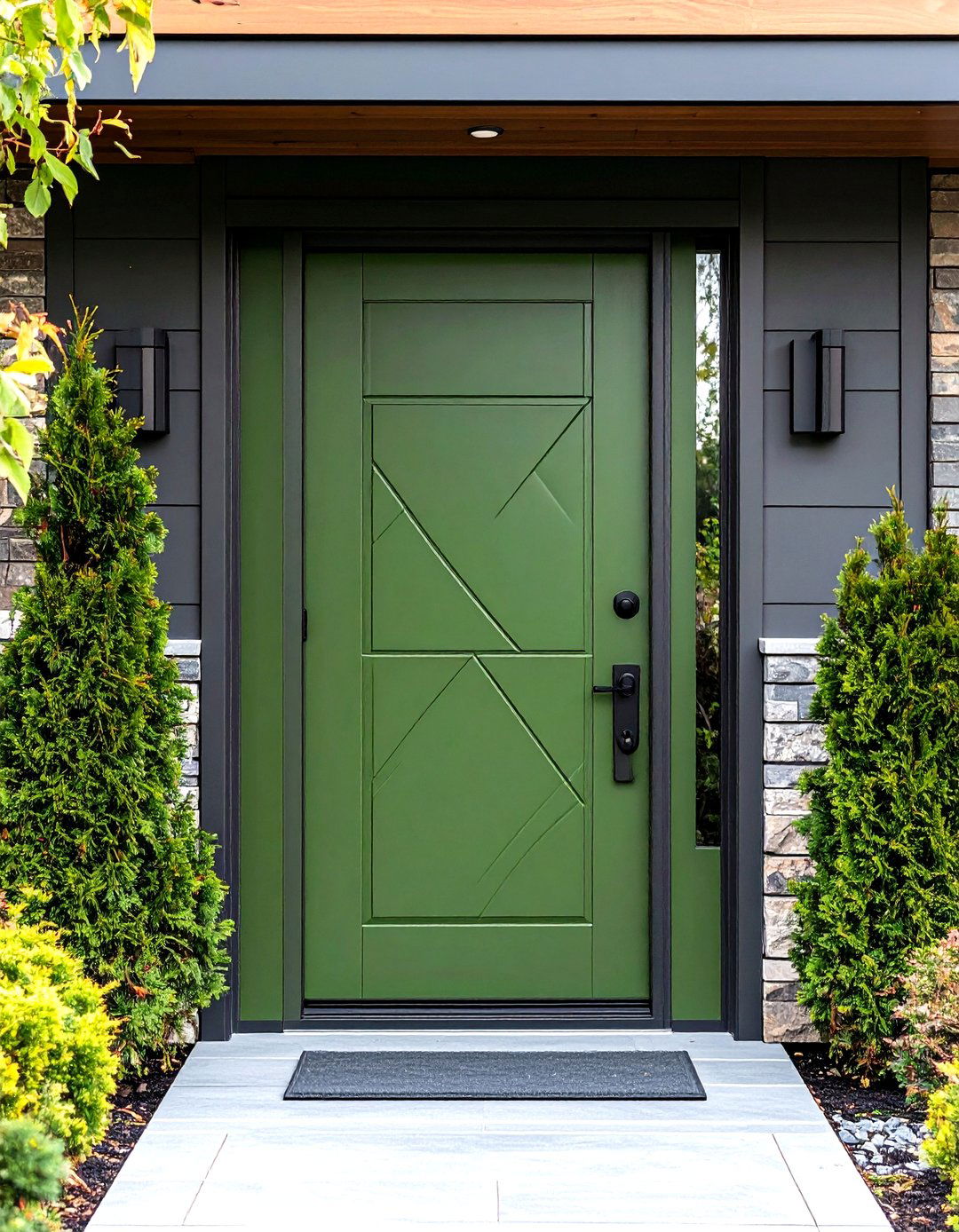
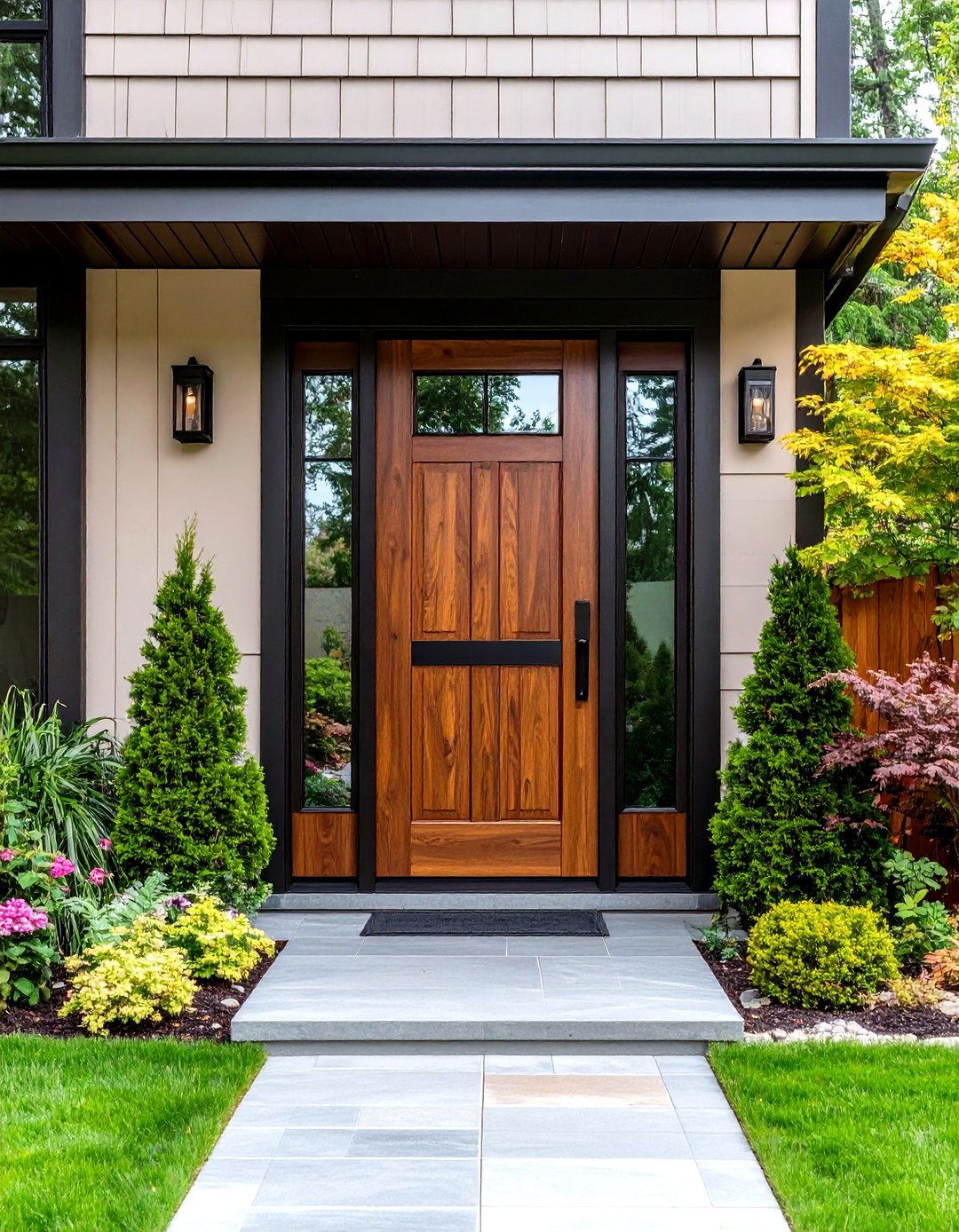
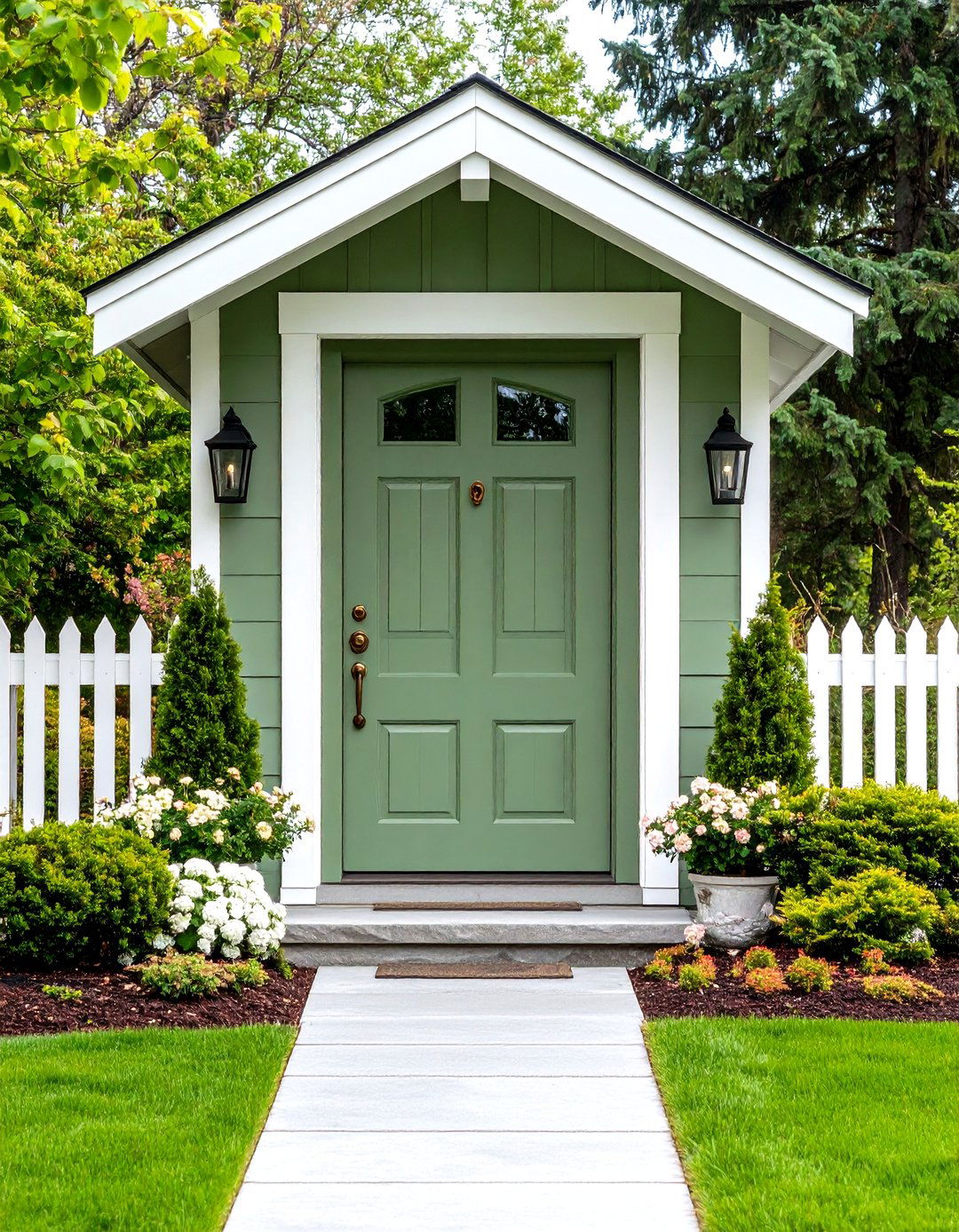

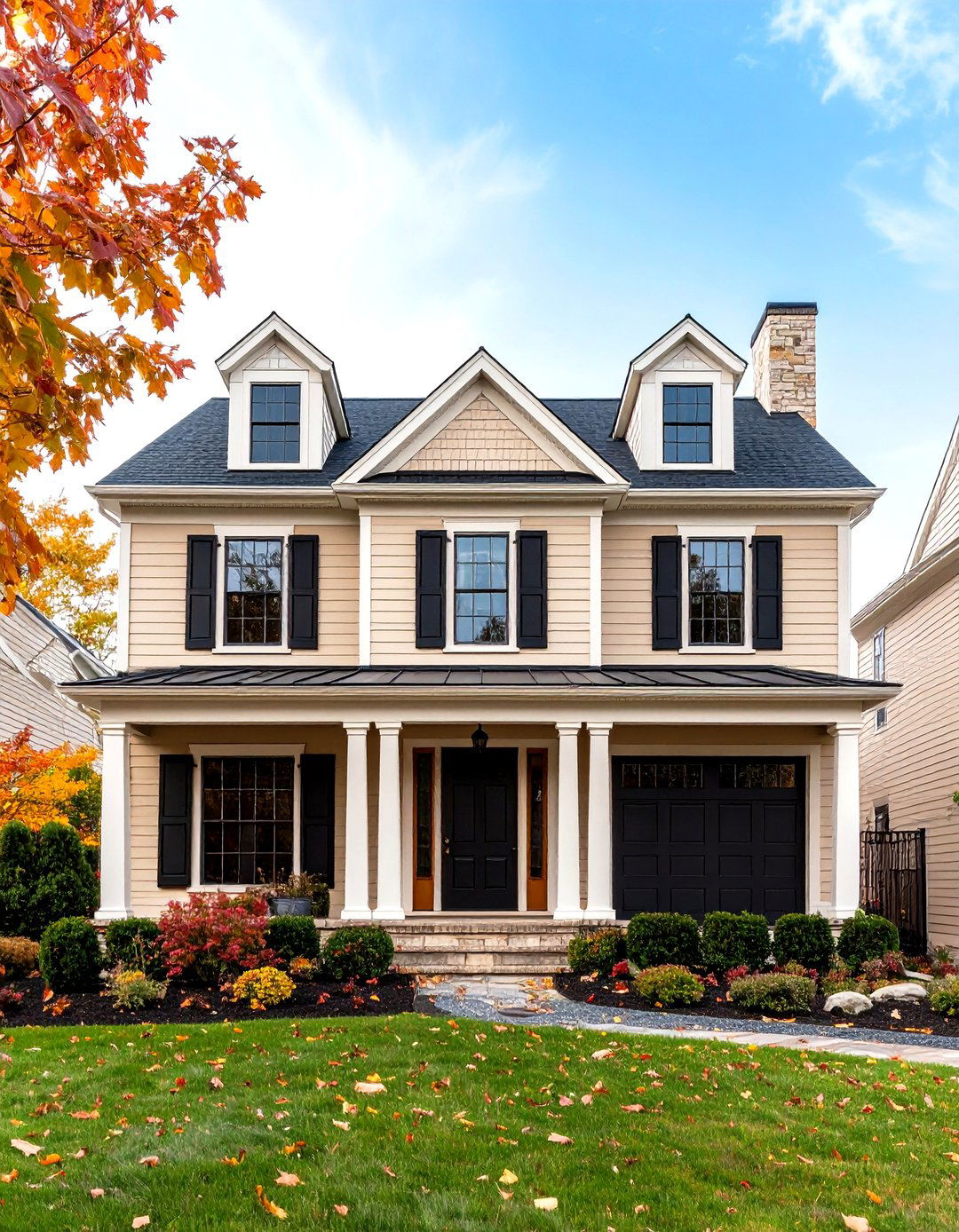
Leave a Reply